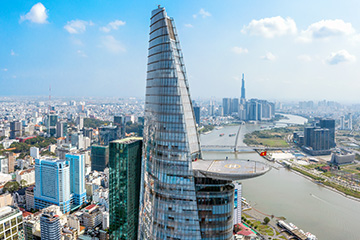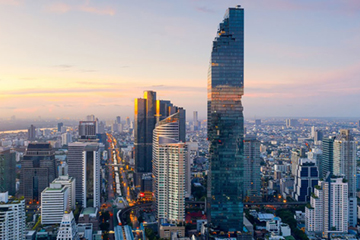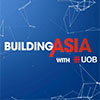Singapore has talents and technology; Johor has land and infrastructure.
When Malaysia and Singapore announced plans to work on a Johor-Singapore Special Economic Zone (JS-SEZ), questions were raised as to the types of industries and sectors that would dominate and thrive in this new zone.
Traditionally, Penang has been known for its Electrical & Electronics (E&E) sector and its medical device manufacturing hub. This is backed by the World Economic Forum noting that major players are setting up shop and expanding their existing operations in Penang, and the state has become a destination for those seeking new options.
The E&E sector in Malaysia secured RM85.4 billion of approved investments in 2023, seeing a nearly threefold increase from 2022. Both Malaysia and Singapore are significant players and partners in the semiconductor ecosystem, and the JS-SEZ will strengthen both countries’ position in the E&E sector.
Additionally, with Penang already an established hub in the semiconductor space, Malaysia’s reputation as a leading player in the E&E sector would be cemented if the JS-SEZ takes off in this area.
Talent attraction and management
Penang has always been dubbed the Silicon Valley of the East with its strong E&E ecosystem and long-standing presence in the industry. Penang’s strength has always been in the form of chip assembly, packaging, and testing. However, it is not uncommon for skilled workers like engineers to choose to pursue similar jobs in Singapore due to better employment packages.
Once the JS-SEZ is established, it could help to attract skilled talent to the hub, thus retaining talent within Malaysia. This can be supported by a planned initiative of implementing a passport-free QR code clearance on both sides, facilitating faster clearance of people at land checkpoints. As supply chains become more integrated between Singapore and Johor, Malaysia will also be able to retain and grow its talent pool, depending on how companies choose to set up their operations.
Tapping well-established infrastructure
Manufacturers looking for a country in this region to expand to due to the ongoing geopolitical climate will be attracted to the JS-SEZ. This is due to the availability of infrastructure, as Johor has many large data centre players in the state. Additionally, the fastest super computers will be brought to Malaysia by mid-2024, thereby making it attractive for players as they increasingly look towards smart manufacturing and automation to optimise processes. Proximity to Singapore is also another attraction, where many subsea cable landing points can connect them to the rest of the world. Currently, the data centres are mostly in Nusajaya Tech Park, Sedenak Tech Park and YTL Green Data Centre Park. An artificial intelligence (AI) project between YTL Power and Nvidia will also be hosted at YTL’s data centre park in Kulai, Johor. This project, along with the entrance of key data centre players, will be attractive to manufacturers coming into Johor/JS-SEZ.
Semiconductor hub for the region
Most importantly, the JS-SEZ can be positioned as a key hub for manufacturing activities, supporting Penang, with Johor leveraging the talents and technology from Singapore to attract key manufacturers to the hub, to become more competitive to neighbouring countries such as Thailand and Vietnam.
Singapore has leading companies carrying out R&D and wafer fabrication work in the country, while Malaysia plays a critical role in the assembly and testing of chips. With the shortage of land and rising costs in Singapore, the JS-SEZ could enable talent from Singapore to travel more frequently at a shorter duration to Johor, to facilitate the exchange of ideas and best practices. With the marketing of the hub, it can position Johor’s expansion of its capabilities, ranging from the backend assembly to packaging and testing, and potential upstream.
With the semiconductor industry racing to reduce its carbon footprint, setting up a technology hub in the JS-SEZ can potentially help to alleviate some sustainability concerns. Companies could set up front-end fabrication facilities in Singapore, while having the assembly and testing of chips or logistics warehouse in Johor to reduce costs. The proximity between Singapore and Johor would also mean lower greenhouse gas emissions for a company’s carbon footprint.
The SG+ twinning model enables companies to pair Singapore’s business advantages with the manufacturing strength of neighbouring production bases, with Johor being one of the key examples. The model enables companies to leverage Singapore’s strengths as a regional treasury centre and its experience in R&D, along with its Free Trade Agreements, while tapping the lower cost of rent and wages in Johor to keep production competitive. Thus, the JS-SEZ can help further market the SG+ twinning model, to further attract companies for investments into Singapore and Johor.
Johor’s Chief Minister Datuk Onn Hafiz Ghazi also earlier announced that a one-stop business service centre will open later this year in Johor. This centre is the first of its kind and will see the collaboration of all Federal and state agencies related to investments. This will help facilitate application processes for various approvals and licences necessary for Singapore businesses to set up in Johor, benefitting companies looking to have a presence in the ASEAN region. Semiconductor companies could set up a sales centre in Singapore, while keeping its warehouse in Johor to keep costs low. Companies that are looking to set up operations in the JS-SEZ should partner with financial institutions that have a robust ASEAN network, industry knowledge and deep understanding of the local market.
With the strengths of Singapore and Johor packaged together, both can use the JS-SEZ to draw investments into Singapore and Malaysia. This ecosystem will play a big role in positioning Malaysia to become an established player in the upstream part of the supply chain, along with its strengths in the backend assembly.
A version of this article was published on CNA on 13 June 2024.
This article shall not be copied or relied upon by any person for whatever purpose. This article is given on a general basis without obligation and is strictly for information only. The information contained in this article is based on certain assumptions, information and conditions available as at the date of the article and may be subject to change at any time without notice. You should consult your own professional advisers about the issues discussed in this article. Nothing in this article constitutes accounting, legal, regulatory, tax or other advice. This article is not intended as an offer, recommendation, solicitation, or advice to purchase or sell any investment product, securities or instruments. Although reasonable care has been taken to ensure the accuracy and objectivity of the information contained in this article, UOB and its employees make no representation or warranty, whether express or implied, as to its accuracy, completeness and objectivity and accept no responsibility or liability for any error, inaccuracy, omission or any consequence or any loss or damage howsoever suffered by any person arising from any reliance on the views expressed and the information in this article.
About the authors
Lim Lay Wah is the Group Head of Sector Solutions Group (SSG) and Global Financial Institutions Group (GFIG) at UOB. She joined UOB in October 2014, with more than two decades of senior global leadership experience across various reputable international banks. She spearheads UOB’s strategic direction in the highly dynamic banking space, driving business opportunities by leveraging UOB’s global network.
Follow her on LinkedIn
As Head of Insights, Telecom, Media & Tech (TMT) within UOB’s Sector Solutions Group, Xiaohan analyses trends that impact the TMT sector and clients. She regularly uses insights while pitching to clients. Prior to joining UOB, she was a technology analyst with IDC where she was often quoted by the media on her views on the technology sector.
Follow her on LinkedIn









